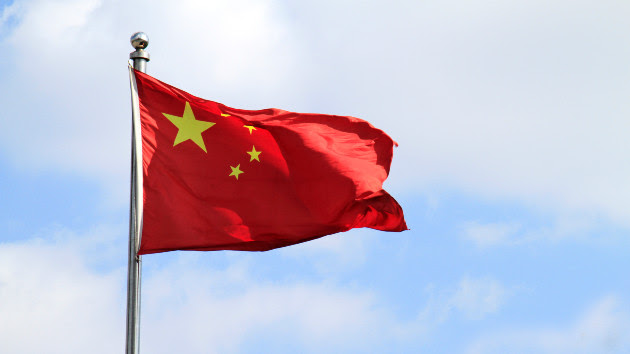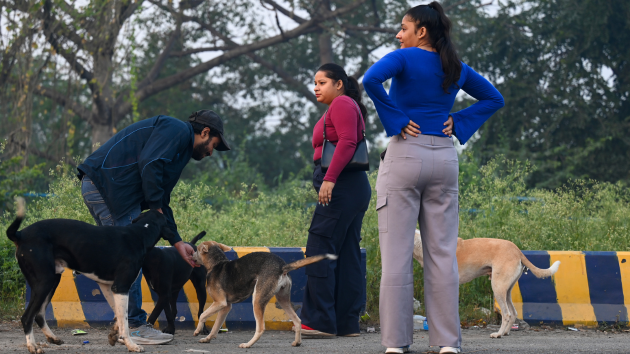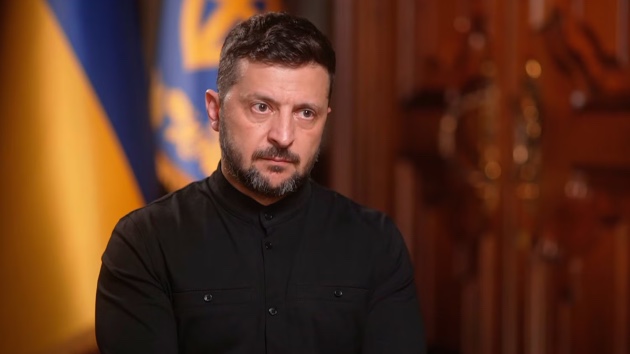China braces for another COVID wave, as first Lunar New Year without restrictions approaches
Written by ABC Audio ALL RIGHTS RESERVED on January 19, 2023

(HONG KONG and BEIJING) — With just days to go until the Lunar New Year, throngs of bundled-up travelers shuffle their way through the freezing temperatures towards Beijing Railway Station, the distinctive mishmash of eastern and western styles built in the 1950s to triumphantly herald Mao’s “New China.”
“We wish Beijing Railway Station all the best for the Year of Rabbit!” shouts a group of youthful security guards, grinning while hoisting up red new year’s scrolls. Their crouching colleague preserving it on his phone for social media.
There is almost a sense of normalcy until a lone traveler in a full head-to-toe white hazmat suit, one that had become so ubiquitous in China’s age of COVID, scurries past, rattling the wheels of his suitcase on the plaza tiles.
They are all rushing towards long-awaited reunions.
This is the first Lunar New Year holiday, also known as the Spring Festival in China, after Beijing dropped nearly all of its zero-COVID measures and the first in over three years without any COVID-related travel restrictions. Chinese officials expect nearly 2.1 billion passenger trips to be made during the 40-day travel period around the holiday, normally regarded as the largest annual human migration in the world, doubling the trips made just a year ago when Beijing dissuaded travel to prevent the spread of the coronavirus.
Amongst the crowds is a Beijing-based office worker in her early 30s surnamed Liu, who is going back home to the northeastern city of Harbin for first time since the pandemic.
China’s massive wave of infections after its abandonment of zero-COVID measures appears to be ebbing just as the celebrations and reunions this coming weekend threatens to reignite a new wave.
Liu, however, is not worried. She had recovered recently from the coronavirus and her entire family and her friends back in Harbin have already been through a bout with COVID as well.
The true size and scale of China’s “Exit Wave” from nearly three years of restrictions remains unclear, as authorities abandoned the once-ubiquitous mass testing regime almost overnight. Anecdotally, infections seemed to have affected everyone, everywhere all at once.
Scenes of long lines outside Beijing crematoriums and bodies having to be placed on the floor of hospital morgues because of full freezers, repeated themselves in major cities across the country in videos circulated on social media, undercutting China’s official toll of 37 COVID-related deaths for much of December.
Space technology firm Maxar released satellite images of increased traffic outside funeral homes across China. One image of a funeral home in eastern city of Huzhou showed a significantly packed parking lot compared to images from a year earlier. When reached by ABC News, a worker there was dismissive, saying the situation “was not the same as been reported by media” before promptly hanging up.
A study released by Peking University’s National School of Development last week estimated that up to 900 million or some 64% of the entire population had been affected by COVID-19 by Jan. 11. The study used data extrapolated from online search queries across the country because of the lack of official figures. Articles referencing the study were promptly censored.
In the following days, after weeks of calls for transparency domestically and internationally over China’s official numbers, including from World Health Organization, Chinese health officials finally announced that there were nearly 60,000 COVID-19 related deaths at government health facilities in the period since restrictions were relaxed. The majority of deaths were seniors over 65 with underlying diseases, officials said. China had only recorded 5,273 official deaths during most of the pandemic.
Jiao Yahui, director of medical affairs at China’s National Health Commission said, “The number of fever clinic visitors is generally on a downward trend after peaking, both in cities and rural areas.”
According to officials, emergency patients nationwide peaked at 1.526 million on Jan. 2 and then continued to decline. By Jan. 12, they were down 28.4% from the peak.
Two packed hospitals in Central Beijing visited by ABC News during the height of the wave in December were now relatively quiet this week. The inundated fever clinics at Chaoyang Hospital from mid-December now only had less than a handful of waiting patients. At the China-Japan Friendship Hospital, patients lining up at the respiratory medicine clinic had visibly halved. The constant stream of ambulances to the hospital was noticeably absent and the non-emergency medicine clinics of the hospital were bustling again.
Beijing’s Dongjiao crematorium told ABC News that they were still operating around the clock but demand was less than what they were seeing in December when hearses lined for hours outside.
In the southwestern metropolis of Chongqing, a suburban funeral cerement store in the Shapingba district told ABC News their business was back to normal. They saw a spike in sales beginning on Dec. 5, even before the zero-COVID U-turn on Dec. 7. They reached their peak sales just few days later on Dec. 10, meaning the virus was likely spreading widely weeks before authorities abandoned their harsh COVID restrictions. At their peak, the store was selling 20 sets of burial garments a day when they would normally only sell four sets.
ABC News reached a family in Chongqing that lost a relative in recent days. They said that the demand at funeral homes appears to have eased and they were able to secure a memorial hall without waiting, though prices remained elevated.
The abrupt shift away from the government’s signature zero-COVID strategy which was trumpeted as late as October by Chinese President Xi Jinping as an “all-out people’s war” that “protected the people’s health and safety” surprised many around the world and within China.
On Tuesday, figures released China’s National Bureau of Statistics, showed that China’s economy was buckling under the zero-COVID restrictions, missing Beijing’s target of 5.5% annual growth, collapsing to only 3% from 8.4% in 2021, the slowest since the 1970s apart from the first year of the pandemic.
“Data still confirms a depressing end to a challenging year for the Chinese economy,” said Aidan Yao, Senior Economist at AXA Investment Managers.
Yao, however, believes the Chinese economy bottomed out in December and figures even reflected the beginning of a recovery in the later part of the month as the COVID wave moved past its peak.
“December has likely marked the darkest before the dawn for the Chinese economy. As COVID comes and goes at an extremely fast speed, normalcy is being restored in cities that have passed the peak of infections,” said Yao. “Given the current run rate, it is likely that the majority of the country would pass the peak wave by late-January or early-February, paving the way for a sustained and broad-based recovery thereafter.”
However, Yao warned, “the spread of the virus in rural China is of a particular concern, given the limited medical infrastructure in many in-land provinces.”
“If migrant workers cannot return to cities on time after the Lunar New Year as they have to look after the sick” it would present an added challenge for the economy, he said.
Back outside the Beijing Railway Station, a 26-year old migrant construction worker surnamed Wang is making his way slowly to back home to the city of Yinchuan in the northwestern Ningxia Hui Autonomous Region. It’s also his first trip home in three years.
Forced to transit in Beijing because all direct trains from Shanghai, where he works, were sold out because of this year’s demand, Wang admits he’s a little apprehensive of a new wave hitting his hometown. He remains one of the few he knows who still hasn’t been infected.
Copyright © 2023, ABC Audio. All rights reserved.
 KVSP
KVSP 




